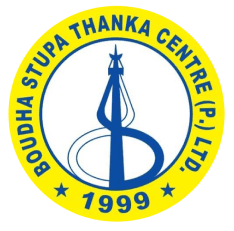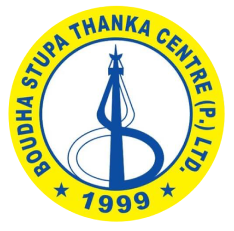- Mandala
- JAPANESE DEITIES
- Peaceful Deities
- Yeshe Tsogyal
- Saraswati Thangka
- Chenrezig Thangka
- Akasagarbha Thangka
- Zambala Thangka Paintings
- Manjushri Thangka
- Dorje Sempa
- Seven Chakra Thangka
- 4 NOBLE FRIEND
- Amitayus
- Chongaba Thangka Painting
- Handmade Guru Rinpoche Thangka (Padmasambhava)
- VALLEY PAINTING
- Machig Labdron
- Ksitigarbha Thangka
- TASHITAKE
- GURU DHAKPO
- BAJRADHARA
- RAINBOW GURU
- AVALOKITESHVARA
- KULKULE
- NAMGYALMA
- MELACHYAN
- DUKAR
- GURU CHHANGE
- MIDUKPA
- SHAMATHA
- CHANDI
- GANESH
- OLD CHOKSING
- OLD GREEN TARA
- OLD WHITE TARA
- OLD 21 TARA
- OLD MILAREPA
- OLD ZAMBHALA
- PRAGYA PARAMITA
- ZAMBALA NAMTSE
- 2 HAND CHENREZIG
- MARICHI
- BUDDHIST SYMBOL
- KONGABA
- Buddha
- Tara
- Wheel of Life Thangka
- Wrathful Deity
- Mahakala
- Life of Buddha
- KAGYU
- REFUGE TREE(CHOKSING)
- SINGHKHOR
- FIGURE
The Wheel of Life Thangka, also known as the Bhavacakra Thangka, is a beautiful and meaningful Buddhist art. The Wheel of Life is the first Buddhist symbol ever to exist. It visually represents the cycle of birth, death, and rebirth, known as samsara. The Bhavacakra thangka is not only a stunning addition to any space but also serves as a powerful reminder of the teachings of Buddhism. The detailed images in the Bhavacakra Thangka help viewers understand important concepts like karma, the six realms of existence, and the path to enlightenment.
Owning a Wheel of Life Thangka can be a deeply enriching experience. It encourages reflection on the nature of life and the importance of spiritual practice. Whether you are a seasoned practitioner or new to Buddhism, the Bhavacakra Thangka can provide valuable insights and inspiration on your spiritual journey.








































Why Buy Wheel of Life Thangka?
Having a Wheel of Life Thangka can greatly enhance your spiritual journey and understanding of Buddhism. The Wheel of Life, or Bhavacakra, is a powerful image that shows the cycle of life and rebirth, illustrating how beings are caught in a continuous loop of birth, death, and new life. Having the Bhavacakra thangka in your home gives you a daily reminder of life's changing nature and how everything is interconnected. It helps you reflect on your own life and supports your meditation practice.
The Wheel of Life Thangka captures the key teachings of the Buddha in one powerful image. The Bhavacakra Thangka shows the idea of karma and the results of our actions, encouraging viewers to think about their own lives and aim for positive change. It also shows the three poisons—ignorance, attachment, and aversion—that keep beings stuck in the cycle of samsara, highlighting the path to freedom through wisdom, ethical conduct, and mental discipline. By looking at the Wheel of Life, practitioners can better understand the nature of suffering and the path to enlightenment, making the Wheel of life Thangka a valuable aid in their spiritual journey.
Symbolism and Iconography of Wheel of Life Thangka
The Wheel of Life Thangka, or Bhavacakra, is rich in symbolism and iconography, each element conveying deep Buddhist teachings. At the center of the wheel, you will find three animals: a pig, a snake, and a rooster, representing the three poisons of ignorance, hatred, and desire, respectively. These poisons are the root causes of suffering and keep beings trapped in the cycle of samsara. Surrounding the center are the six realms of existence: gods, demigods, humans, animals, hungry ghosts, and hell beings. Each realm depicts the different states of existence and their types of suffering.
The wheel's outer rim is divided into twelve sections, illustrating the twelve links of dependent origination. These links explain the process of birth, life, death, and rebirth, showing how actions and consequences are interconnected. At the top of the Thangka, you will often see the figure of Yama, the lord of death, holding the wheel, symbolizing the impermanence of life and the inevitability of death. Above Yama, there is usually an image of the Buddha pointing towards the moon, representing the path to liberation and enlightenment. Each element in the Wheel of Life Thangka serves as a visual aid to understand and contemplate the core teachings of Buddhism, making it a powerful tool for spiritual growth.
Artistry and Craftsmanship in Wheel of Life Thangka
At BSTC Thangka Store, we take great care in making our Wheel of Life thangkas. Our artists are skilled and use old techniques passed down through generations. They pay close attention to every detail, making sure each part of the wheel is painted just right.
We use special paints that stay bright for a long time. Our artists mix these paints by hand to get the perfect colors. They paint on high-quality cloth that's made to last. Each thangka is painted slowly and carefully, with the artist focusing on correcting every symbol and figure.
BSTC Thangka Store makes sure that each Wheel of Life thangka follows the traditional rules of Buddhist art. We check each painting to make sure it looks good and has all the right parts. When you buy a Wheel of Life thangka from us, you get a thangka that's not just pretty but also true to Buddhist teachings.



